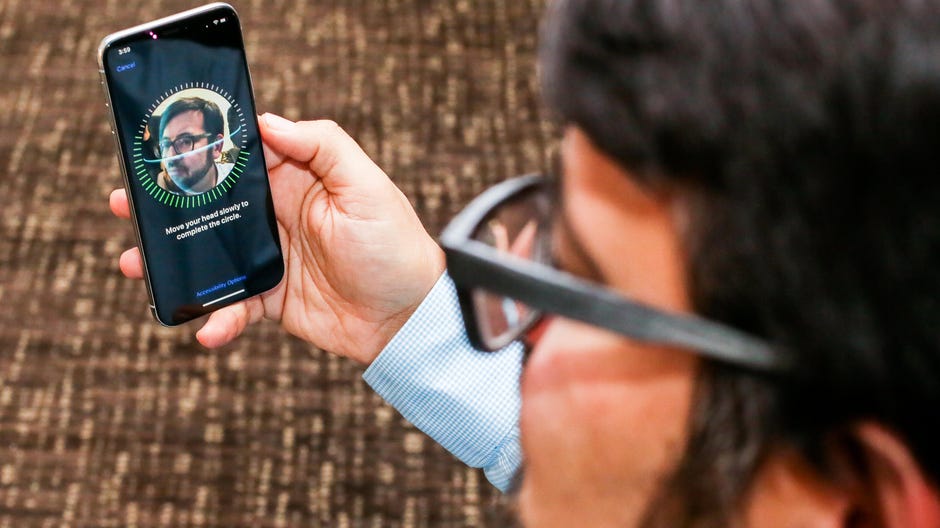Facial recognition has become commonplace on smartphones and laptops, but not all of them are equally reliable or even secure.
Facial recognition on smartphones
Facial recognition on smartphones: is it safe and should it be used?

Facial recognition on personal use devices such as smartphones and laptops is increasingly common. The concept seems downright futuristic at first glance: Just a few years ago, most of us used a PIN, password, or pattern to unlock our devices.
However, despite the rise of technology, you should know that not all facial recognition implementations are created equal. Some techniques are inherently safer than others, while others offer optional settings to reduce the risk of being deceived by an intruder.
With that in mind, let’s take a look at the different types of facial recognition techniques used today. We’ll also discuss the security of the feature later and whether or not you should enable it on your devices.
Facial recognition with camera
As the name suggests, this technology relies on your device’s front cameras to recognize your face. Virtually all Android smartphones have had this feature since the release of Android 4.0 Ice Cream Sandwich in 2011. This was before fingerprint sensors were as common as they are today, making them the first option. biometric unlocking.
The operation is quite simple: when you activate the function for the first time, your device will ask you to take pictures of your face, sometimes from different angles, then use a software algorithm to extract and save your facial features. Each time you try to unlock your device, a live image from the front camera is compared to the benchmark data.
The accuracy mainly depends on the software algorithms used, so the system is far from perfect. Things get even more complicated when devices have to take into account variables such as different lighting conditions, changes in appearance, and the use of facial aids such as glasses. , jewelry and even masks.
While Android offers facial recognition APIs, smartphone makers have also developed custom solutions over the years. Overall, the goal was to improve the detection speed of the device without sacrificing too much accuracy. However, some implementations have gone too far and might have to accept a photo.
Infrared facial recognition
Although most devices already have a front camera, infrared facial recognition requires additional hardware. However, not all infrared-based facial recognition solutions are created equal.
The first type of infrared face detection takes a two-dimensional photo of your face, similar to the previous method, but in the infrared spectrum. The main advantage is that infrared cameras do not have to illuminate your face well and can even work in low light environments. They are also much more resistant to infiltration attempts because infrared cameras use thermal energy or heat to create an image.
Take a look at the following image from Microsoft showing how infrared cameras display photos and screens.
Two-dimensional infrared facial recognition can be found these days mainly on high-end laptops under the umbrella of Windows Hello. This includes Microsoft’s Surface devices and other business laptops. Apart from that, you can also get external webcams like the Logitech Brio 4K which include Windows Hello certified IR cameras.
While 2D infrared facial recognition is way ahead of traditional camera-based methods, there is a better way to do it. For example, Apple’s Face ID uses a number of sensors to capture a three-dimensional representation of your face. projector and dot projector to project thousands of tiny invisible dots on your face. Then, an infrared sensor measures the arrangement of the points and creates a depth map of your face.
3D systems have two advantages: they can work in the dark and are much more difficult to fool. While 2D infrared systems only look for heat, 3D systems also need depth information. The latter can of course not be performed without a reasonably precise prosthesis figure.
